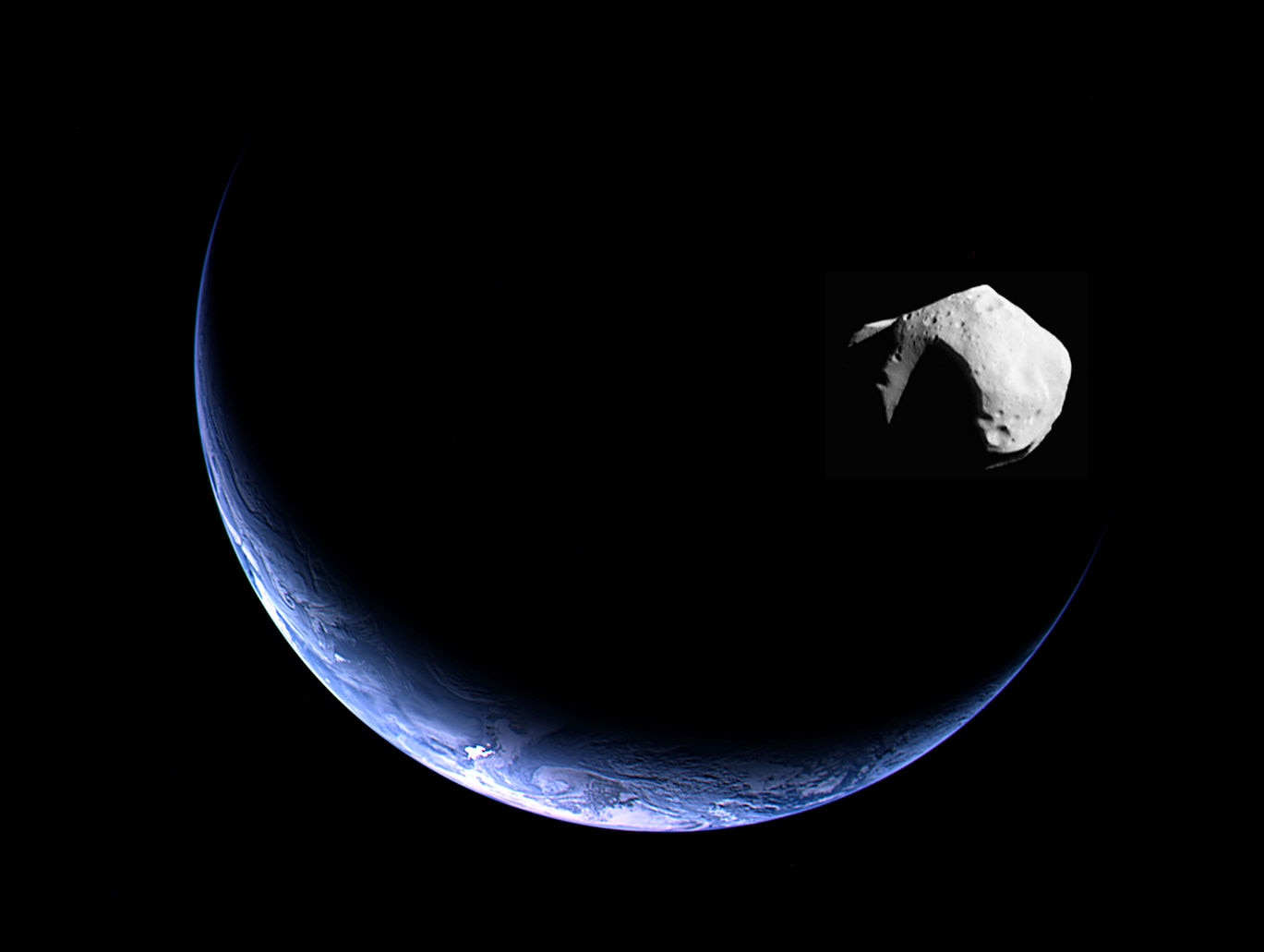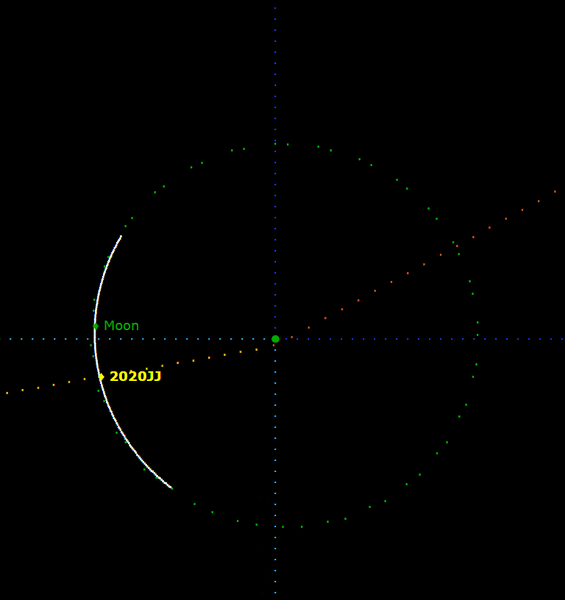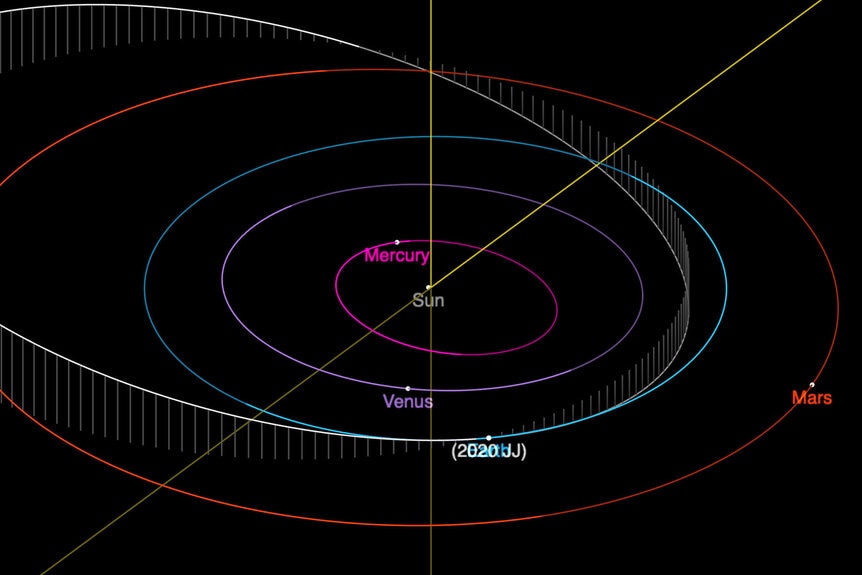Create a free profile to get unlimited access to exclusive videos, sweepstakes, and more!
On May 4th, a tiny asteroid missed Earth… but just barely

I guess the Force was with us: In the early morning hours of the 4th of May, a small asteroid 3-6 meters* across passed by the Earth, missing our world by a mere 7,000 kilometers — only about the radius of the Earth itself! It passed so close to us its orbit was significantly changed by Earth's gravity, too.
Before you panic, at this diameter (about the size of a car) it wouldn't have done any real damage even if it had hit us. But it would've put on a helluva show, creating an intensely luminous fireball easily brighter than the full Moon as it burned up and broke apart in our atmosphere, probably a few dozen kilometers above the Earth's surface. It’s also likely small pieces would’ve made it to the ground as meteorites, too. But it did indeed miss us and is now on its way out.
It was discovered just hours before closest approach by the automated Catalina Sky Survey, an observatory in Arizona. It sweeps the sky repeatedly, looking for moving objects like asteroids. The asteroid, subsequently called 2020 JJ**, was detected in four observations taken in the minutes around 06:00 UTC. Astronomers were alerted, they checked that it was real, and then reported it to the Minor Planet Center in Massachusetts. The report was then published at 06:36.
This part is amazing: An automated alert was sent out all over the world, and within minutes other observatories were turning toward the coordinates of the object (which, mind you, was so close that observatories in different parts of the planet would see it in different parts of the sky!). In less than an hour (!!) it was being observed by other telescopes in Arizona as well as observatories in Hawaii and Illinois.
This part made the hairs on the back of my neck stand up: For a short time, before observations had nailed down its trajectory, there was a 5% chance of impact! I know those aren’t short odds — a 1 in 20 chance is pretty low† — but still that’s high for an impact. Of course, like I said, even if it had hit it wouldn’t have been dangerous. Just spectacular.
As I've written before, when an asteroid is first discovered, the orbit calculated for it is pretty fuzzy, because we don't have a long enough arc to really be able to predict where it will be in the future. Small uncertainties in the position early on add up to big ones later. The analogy I like is if you're an outfielder in a baseball game, and as soon as the batter hits the ball you close your eyes. Now, predict where the ball will be when it lands. Yeah, nope. But if you keep watching it you’ll be able to see its trajectory much better.
So the projected orbit of 2020 JJ was a fuzzy cone, spreading out enough to include the Earth. But then more observatories saw it, the uncertainties shrank, the cone narrowed, and it was found it would miss us. But not by much.
The closest approach was at 12:03 UTC on 4 May, when it was about 13,400 km from the Earth’s center. Given our planet's radius is just under 6,400 km, that means it missed us by about 7,000 km. That's pretty dang close, and in fact the orbit of the asteroid noticeably changed after it passed as Earth's gravity warped its path.
It's actually amazing that it was seen at all; it's so small that it was pretty faint. It came in from a direction pretty much opposite the Sun in the sky, which was fortunate. That means it's up at night, and also we see it "full" (if it were closer to the Sun we see less of it lit, so it's a crescent like a new Moon, and therefore much fainter). Many times with asteroids this size we don't see them until after they've already passed.
In fact, once the observations were in, the trajectory of 2020 JJ was so well determined that its position was known to about 5 km perpendicular to its path. Had it actually hit us, the spot where it entered our atmosphere would've been pinpointed to that accuracy. That's damned impressive. Remember, the observations were all taken over the course of just two hours. That's actually comforting; astronomers are getting really good at this sort of thing!
It's on a roughly two-year elliptical and slightly inclined orbit that takes it from just inside Earth's orbit to out past Mars, and it's now headed back out into deeper space. But it's still on an orbit that brings it near the Earth, so it'll be back. Probably not for a long time, though. And if we do see it again, that's OK too. Space is big, and this asteroid is little. It's no threat to us. But there are bigger ones out there, and it's nice to know we have so many eyes on the sky looking out for us, and doing such a good job at it.
* Roughly womp rat-sized, if you will.
**No relation.
†Though significantly higher than 3720 to 1.




























